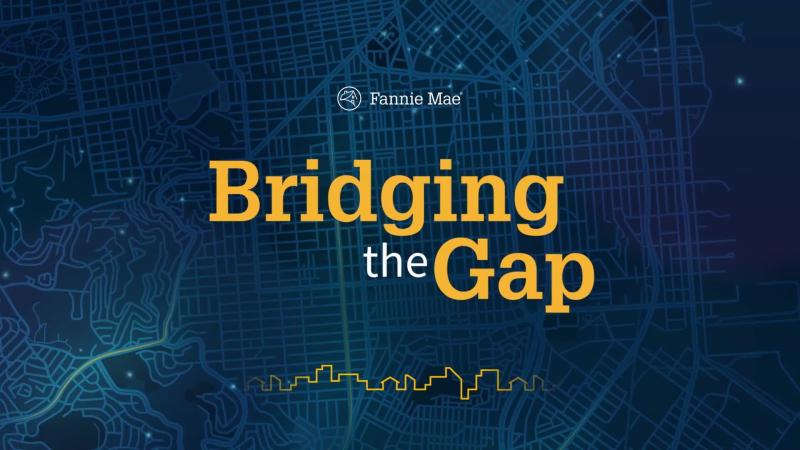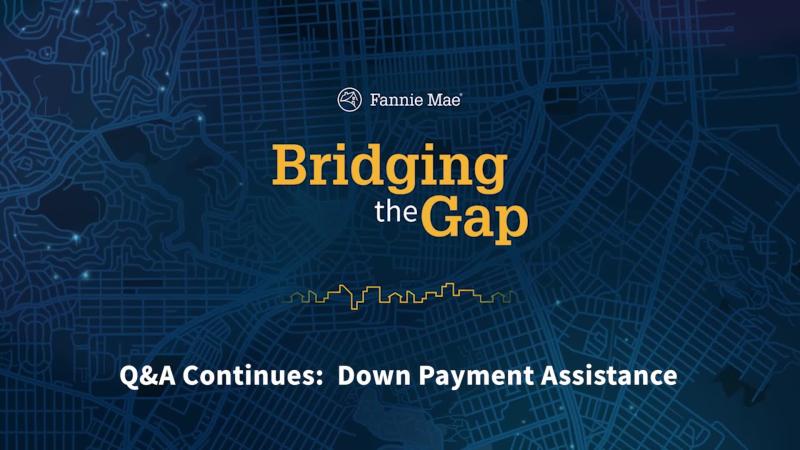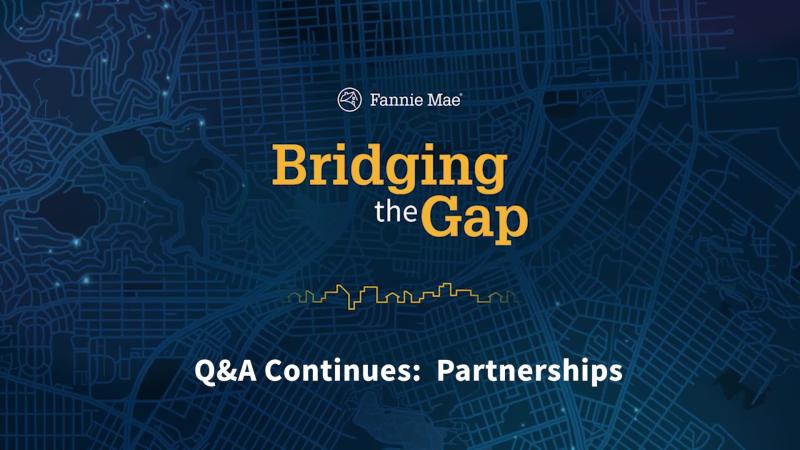Bridging the Gap: Building an Equitable Housing System
On April 27, 2021, Fannie Mae CEO Hugh Frater kicked off the first of Fannie Mae’s 2021 “Bridging the Gap” series, which explores the persistent racial inequities in our housing system and solutions for addressing them. Frater was joined by Fannie Mae EVP & Chief Administrative Officer Jeff Hayward, Fannie Mae VP of Diversity & Inclusion Kenneth Imo, and Urban Institute President Sarah Rosen Wartell in a wide-ranging discussion of the long-time gap in homeownership rates between white people and people of color, particularly Black people.
Future Bridging the Gap events will bring together leaders and changemakers in 2021 who have innovative ideas to make the housing system fundamentally fairer, particularly for communities of color that continue to suffer from a legacy of racist housing policies and practices.
For this first conversation, which was virtually attended by more than 500 people, Urban Institute’s Housing Finance Policy Center shared its research on expected homeownership trends over the next two decades and policy ideas for narrowing the racial gap in homeownership.
Panelists agreed on the urgent need for action after the events of 2020.
“I think it’s impossible to not be changed by watching a knee on George Floyd’s neck until he took his last breath,” said Wartell. “And it’s impossible not to be changed by seeing how this pandemic has struck so severely the health lives and livelihoods of communities of color.”
There’s a renewed sense that something has to happen, and something has to happen now.
Laurie Goodman, Founder of the Housing Finance Policy Center, presented Urban’s latest data underscoring the extent and persistence of the racial homeownership gap. Goodman noted, “From 2000 to 2020, the homeownership rate dropped by 4.4% for [Black Americans] while rising for every other race and ethnicity.” Goodman stated that the racial divide in homeownership rates is most stark in the 45- to 64-year-old age group, with the white homeownership rate at 79.7% and the Black homeownership rate at only 49%. Absent meaningful policy interventions, the Center projects the racial homeownership gap will widen over the next 20 years, particularly for this 45- to 64-year-old age group, where Goodman expects declines in the Black homeownership rate by 6.3%.
“These challenges can certainly seem daunting,” said Michael Neal, a Senior Research Associate at the Housing Finance Policy Center, “particularly at a time in which the structural barriers that make these homeowners more vulnerable coincides with, or overlaps with, a COVID recession that makes the situation even worse.” Neal drew on Urban’s Five-Point Framework, a set of policy and housing industry solutions to reduce the Black homeownership gap. These include “focusing on sustainable homeownership and preservation, advancing policy solutions at the local level, and tackling housing supply constraints and affordability.” Neal said there were other concrete policy changes that could meaningfully improve the Black homeownership rate and build generational wealth, such as expanding down payment assistance and strengthening pre-purchase and post-purchase counseling.
I can no longer be satisfied by working at the margins. This is a problem deeply embedded in multiple systems. And so we need to approach it with a whole-of-industry, whole-of-government mentality, coming together in systemic ways to make change.
Frater concurred, stating, “As one of the largest financial institutions in the world, the biggest holder of U.S. mortgage credit risk, I think we have some influence.” Frater added, “There are an estimated 60 to 65 million thin-file or no-credit-file households. A question we ask ourselves is, ‘Should all of them have their faces pressed up against the window of opportunity? Or is there something we can do to help them?’”
Frater cited improved access to mortgage credit, credit scoring alternatives, down payment assistance programs, and education and counseling as some of the ways the racial homeownership gap can be narrowed. Frater also said that Fannie Mae can have an impact “by constantly working to make sure our underwriting engines are better and more accurate, by lowering costs where we can in the mortgage process, and by incentivizing income-inclusive housing in the multifamily properties we finance.” But he emphasized, “Action has to be collective and aligned. GSEs can help, but only in concert with others.”
Imo concluded the event by reminding the audience that “awareness without action is meaningless. So here’s to taking action.”




